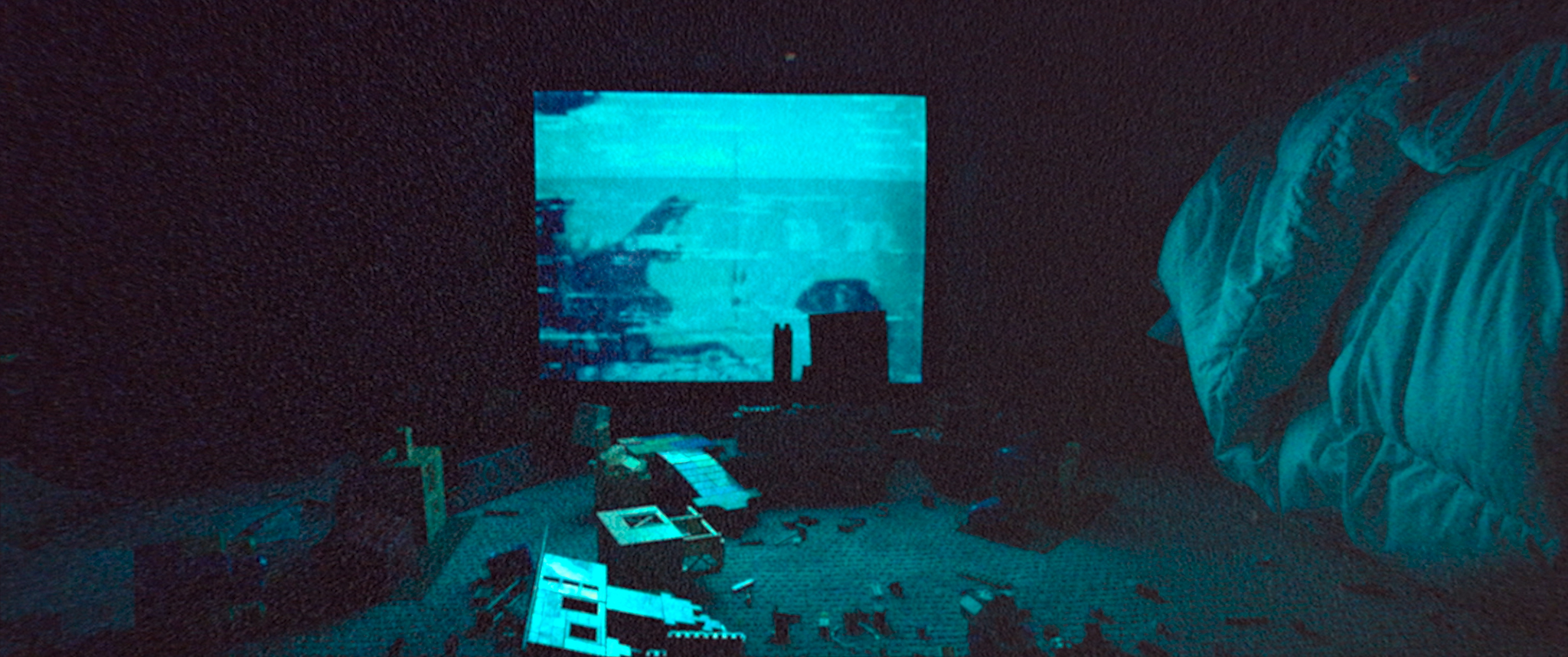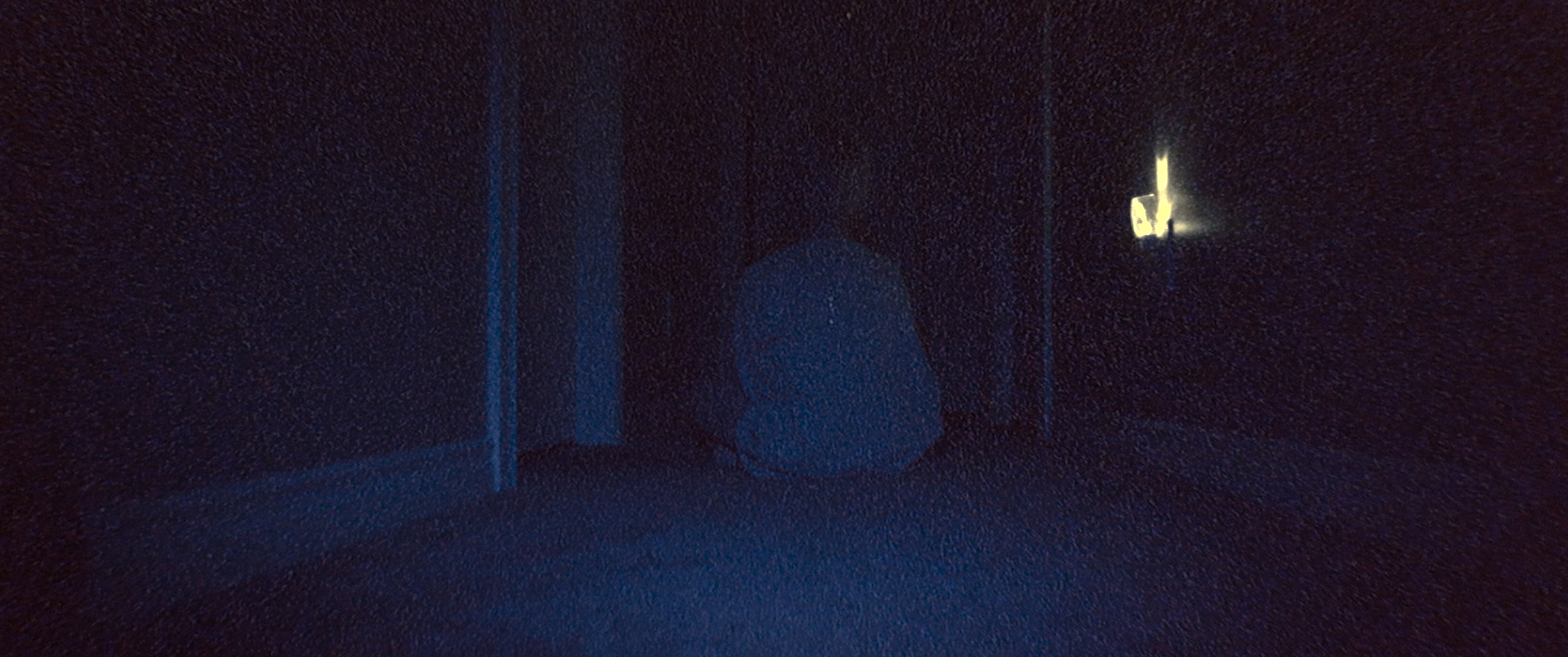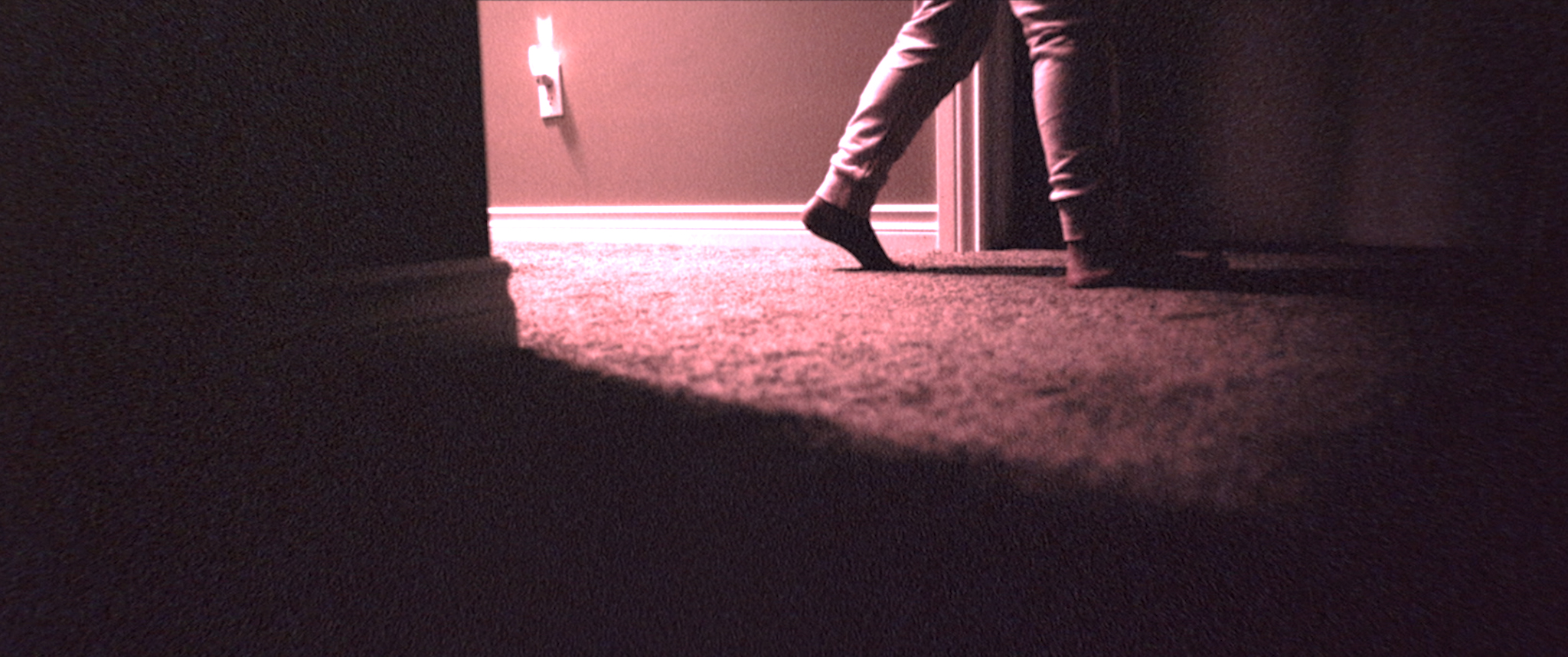
★★★☆☆
SKyle Edward Ball’s viral, lo-fi horror film taps into a familiar fear of the unknown. Read our Skinamarink review.
Skinamarink doesn’t have a plot; it barely has a premise. Two children, Kevin and Kaylee, wake up in the middle of the night to find their parents gone. As if that wasn’t scary enough, all the windows and doors in their house slowly disappear.
Kyle Edward Ball’s film has gone viral, with clips and stills posted all over the internet. Skinamarink has been described as one of the scariest films ever made, and it’s easy to understand why. Every minute, the whole film drips heavily with a terrifying atmosphere.
The film taps into a very primal, visceral childhood fear. It uncannily resembles the experience of waking up in the middle of the night as a child. You call out for your mother, and if she isn’t in your room in 0.2 seconds, you’re certain she’s dead. And even if she does come in to soothe you, you’re not entirely sure there isn’t something hiding in the darkness. Skinamarink emulates this vividly but may also prove a little too experimental in form for audiences to embrace.

Still from Skinamarink. Photo Credit: Shudder
At 100 minutes, the film is far too long. With no story or plot, just “vibes”, as the kids say these days, Skinamarink demands a lot from anyone watching it. It took me two tries to watch it, first at home in daylight, when my flatmates proved too loud for me to tune into Skinamarink’s wavelength. I tried again the next day in our offices with headphones, and the result was better, but Skinamarink will work best watched either alone in the middle of the night or in the cinema as a shared trauma between patrons brave enough to face the darkness.
With an immersive sound design that amplifies every creak and thud, Skinamarink is more of an experience than a passive film. As you watch and descend further into its ghastly world, you end up living through a very singular experience, perfectly captured by Ball, but it’s without a doubt a frustrating, at times boring watch. There is real talent here; Ball’s framing and use of sound are interesting, but overall, Skinamarink feels unrefined.
READ MORE: ★★★☆☆ M3GAN review | The viral doll horror is a flawed delight
Shot digitally but made to look like grainy film footage (the film takes place in 1995), most of the film’s shots are focused in the dark corners of rooms. We never see a character’s face, and the camera never moves. You quickly begin to project your own horrors into the abyss, and I could fully see myself quivering with fear while watching this alone at night with noise-cancelling headphones on. In this day and age, that’s saying something.
That being said, maybe Skinamarink isn’t meant to be analysed. The more I sit with it, the more fascinated I am by it. Ball blurs the lines of reality and dream; we overhear the kids’ father say Kevin fell down the stairs and hit his head. Maybe all this is happening inside Kevin’s fractured mind, but it never really matters. What matters is how it feels to be scared, how visceral and specific that fear is for a child.

Still from Skinamarink. Photo Credit: Shudder
While Skinamarink might not be the horror masterpiece it has been painted online, it still represents a very exciting new voice in genre filmmaking. Made with a budget of $15,000, the film has grossed approximately $1.7 million at the box office. Its nightmarish imagery has clearly struck a chord with audiences. We can all relate to that very distinct feeling of vulnerability as a child, a fear strongly present in Skinamarink.
Skinamarink is streaming on Shudder now.




